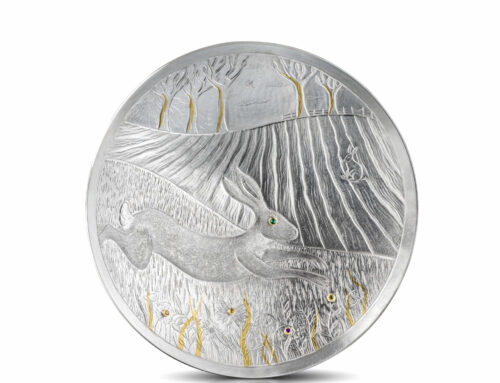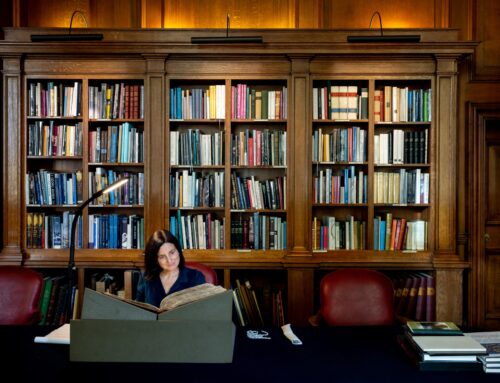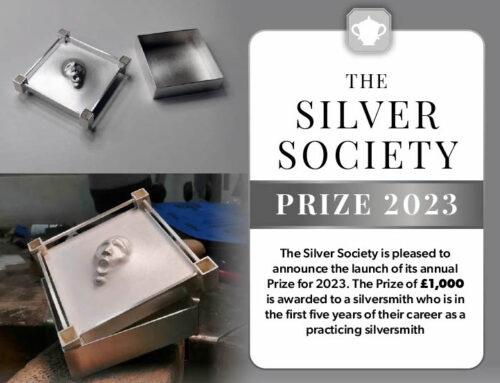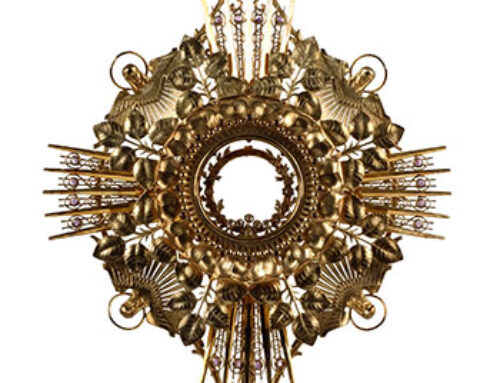Many members of the Silver Society may be familiar with Graham Stewart and his work as he exhibited at Goldsmiths’ Fair every year from 1986 through to 2018. He was the Fair’s longest serving exhibitor. At the 2019 Fair, his usual stand was eerily vacant indicting that all was not well. It transpired that he was too ill to attend the event as he had bowel cancer. By early 2020 he was winding-up his business. I agreed to purchases his Mobius Bowl, considered by many to be his masterpiece, for The Pearson Silver Collection.
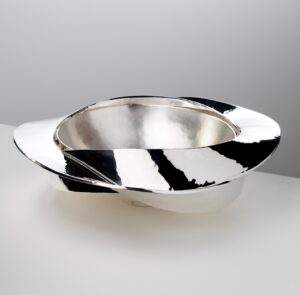
Mobius Bowl
This is one of Graham’s most admired pieces, which accompanied the Silver of the Stars (see body copy) for its ¾-million-mile world tour. The rim of the bowl is a Möbius strip. Imagine the rim is a strip of a flexible material with two sides. By holding one end and twisting the other through 180˚ and then joining them together creates a loop with only one surface. Google ‘mobius strip’ and you can watch a video showing how you can create your own with a strip of paper. The is a stunning reflective piece of silver. Diameter 15½in. Edinburgh 2005. Courtesy The Pearson Silver Collection, photographer Shannon Tofts
Subsequently Graham offered me the entire contents of his workshop as it was his wish that it should be an educational resource to support emerging silversmiths. I considered that the obvious home was the Incorporation of Goldsmiths in Edinburgh, The e-mail was sent to Ebba Goring then the Incorporation’s Director who is the now Chief Executive of The Scottish Goldsmiths Trust (SGT) to which the Incorporation’s charitable work has been transferred..
No time was lost by Tom Murray, the Incorporation’s Deacon, contacting Hugo Burge at Marchmont House. In 2005, the Burge family, who own much of the former Marchmont Estate, acquired the house which had been used as a nursing home. The institutionalising of the building had degraded the interiors of what is one of Scotland’s most important, but least known, country houses.
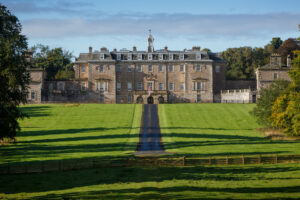
Marchmont House – The front of Marchmont House, a ‘Grade A’ listed Palladian mansion built in 1750
The restoration and refurbishing of the house started in 2011 and in 2018 it won the Historic Houses/Sotheby’s restoration award. The objective was – wherever possible to use local craftsmen. During the process Hugo was struck by the ‘remarkable talents’ of people involved – the trade, craftspeople and artists. ‘It really planted this seed that has now become the kernel of what we are doing at Marchmont – a purpose to make a home to makers and creators,’ he said.
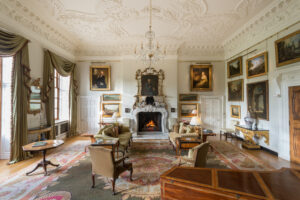
Drawing Room – Marchmont House’s fully restored Drawing Room
Whilst Marchmont House itself is the hub of Hugo’s dream of celebrating and supporting creativity. The project also embraced the whole estate and the potential to give other derelict buildings a purpose. On 1 July 2020, its first additional such home opened by converting the estate’s old coach house into a studio, workshop, display and communal area for two young makers of rush-seated chairs. Studios have now also been provided for artists and a pottery studio is in hand, so the Incorporation’s proposal to Marchmont could not have been better timed.
The Marchmont Silversmithing Workshop will be based in the estate’s large old kennels. There is a nearby cottage that could be accommodation for the master silversmith. The workshop could take up to three emerging silversmiths at a time. Additionally it will also provide space for short-term residences, enabling silversmiths to focus on a specific commission or international exchanges.
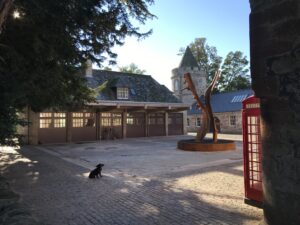
Marchmont Studios – The courtyard around which there are artists’ studios
The project is being led by the SGT, with support from Marchmont House Creative Spaces and the William Grant Foundation. The plans are complete and Marchmont would like to break ground in the Spring of 2022, with a build estimate of six months followed by fit-out of three months with a formal opening in March 2023. There is further information on the logistics of the project on the SGT site at https://scottishgoldsmithstrust.org/marchmont-silversmithing-workshop
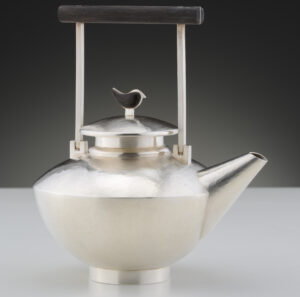
STEWART TEAPOT
Hannah’s tea kettle with a swing overhead black wood handle was one of three pieces Graham entered into the exhibition Silver and Tea: a perfect blend staged by the Goldsmiths’ Company in London from 28th May to 3rd July 1998. Teapots were a fascination of Graham’s over his career as he strived to design ‘the perfect one’. The model for this design had been placed on a table that he often passed when he noticed his small daughter Hannah had placed a small bird on the lid. The piece here was not the one in the exhibition, but was made the year afterwards. In this later example, the bird is encased in black wood, whereas the original one was just silver. Ht 8¼in. Edinburgh 1999. Courtesy The Pearson Silver Collection, photographer Bill Burnett
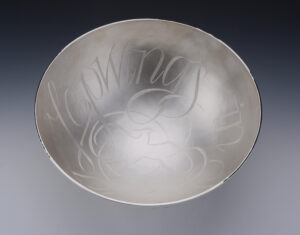
GRAHAM STEWART ENGRAVED BOWL
This is one of the last pieces of silver Graham designed and made and the last piece he specifically made for an exhibition. Possessing an innate love of nature and inspired and nourished by the landscape that surrounded his home, it was inspired by a group of spring lapwings he saw in flight. Engraved with the words Lapwings in Spring in his cursive script around a stylised bird, it is an object of great beauty. It was exhibited in Lettering Art & Illusion at Ruthin Craft Centre in North Wales from 19 October 2-9 – 12 January 2020. The interior of the bowl is matt, while its exterior is highly polished. Diameter 9ins, Edinburgh 2019. Courtesy The Pearson Silver Coillection, photographer Shannon Toft
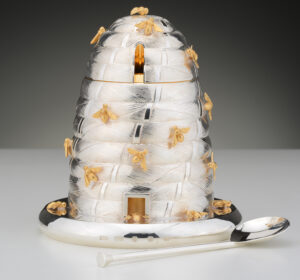
GRAHAM STEWART HONEYPOT
It is sometimes strange how objects originate. Graham had made money boxes in the form of pillar boxes for a client to give to his grandsons. When granddaughters arrived, the client felt that money post boxes were not appropriate for little girls. After some thought, Graham proposed one in the form of a beehive or skep. The client liked the idea and ordered three. A beekeeper saw one and commissioned a honeypot in the same style designed to take a standard pound jar of honey. When exhibited at Goldsmiths’ Fair in 2011 it was greatly admired by visitors. The interior is gilded and the inside of the cover features a honeycomb. Traditionally skeps were placed on a square short-legged stand raising it just above the ground. The Collection commissioned a round base with no legs. Height 7.5in. Edinburgh 2018. Courtesy The Pearson Silver Collection, photographer Bill Burnett

